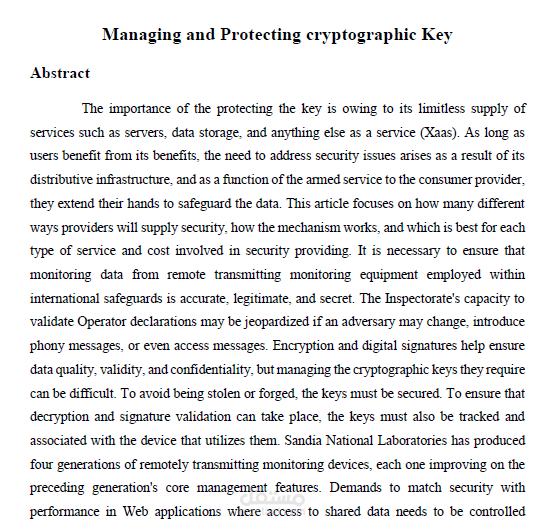Managing and Protecting cryptographic Key
تفاصيل العمل
The importance of the protecting the key is owing to its limitless supply of services such as servers, data storage, and anything else as a service (Xaas). As long as users benefit from its benefits, the need to address security issues arises as a result of its distributive infrastructure, and as a function of the armed service to the consumer provider, they extend their hands to safeguard the data. This article focuses on how many different ways providers will supply security, how the mechanism works, and which is best for each type of service and cost involved in security providing. It is necessary to ensure that monitoring data from remote transmitting monitoring equipment employed within international safeguards is accurate, legitimate, and secret. The Inspectorate's capacity to validate Operator declarations may be jeopardized if an adversary may change, introduce phony messages, or even access messages. Encryption and digital signatures help ensure data quality, validity, and confidentiality, but managing the cryptographic keys they require can be difficult. To avoid being stolen or forged, the keys must be secured. To ensure that decryption and signature validation can take place, the keys must also be tracked and associated with the device that utilizes them. Sandia National Laboratories has produced four generations of remotely transmitting monitoring devices, each one improving on the preceding generation's core management features. Demands to match security with performance in Web applications where access to shared data needs to be controlled dynamically make self-protecting security schemes attractive. Yet, standard schemes focus primarily on correctness as opposed to adaptability and so need to be extended to handle these new scenarios. One of the approaches to enforcing cryptographically controlled access to shared data is to encrypt it with a single secret key that is then distributed to the users requiring access. Data security is ensured by replacing the group key and re-encrypting the affected data whenever group membership changes. Thus, key management (KM) is expensive when changes in group membership occur frequently and involve large amounts of data.
